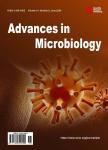Comparison of Five Expression Vectors for the Ha Gene in Constructing a DNA Vaccine for H6N2 Influenza Virus in Chickens
Comparison of Five Expression Vectors for the Ha Gene in Constructing a DNA Vaccine for H6N2 Influenza Virus in Chickens作者机构:School of Veterinary and Life Sciences Murdoch University Perth Australia
出 版 物:《Advances in Microbiology》 (微生物学(英文))
年 卷 期:2016年第6卷第4期
页 面:310-319页
学科分类:1002[医学-临床医学] 100214[医学-肿瘤学] 10[医学]
主 题:DNA Vaccine Multiple Expressing Vectors H6N2 Avian Influenza a Virus Chickens
摘 要:A number of eukaryotic expression vectors have been developed for use as DNA vaccines. They showed varying abilities to initiate immune responses;however, there is little data to indicate which of these vectors will be the most useful and practical for DNA vaccines in different species. This report examines the use of five expression vectors with different promoters and Kozak sequence to express the same hemagglutinin (HA) protein of an H6N2 avian influenza virus for DNA vaccination in chickens. Although intramuscular vaccination with seven DNA constructs elicited no or limited measurable H6 HA antibody responses in Hy-Line chickens, variable reduction in virus shedding for either oropharyngeal or cloacal swabs post-virus challenge were observed. This indicated that all DNA constructs generated some levels of protective immunity against homologous virus challenge. Interestingly, lower dose (50 or 100 μg) of plasmid DNAs consistently induced better immune response than higher dose (300 or 500 μg). In the transfection experiments there appeared to be a hierarchy in the in vitro expression efficiency in the order of pCAG-optiHAk/ pCAG-HAk pCI-HAk VR-HA pCI-HA pCI-neo-HA pVAX-HA. Since the level of in vitro expression correlates with the level of immune response in vivo, in vitro expression levels of the DNA constructs can be used as an indicator for pre-selection of plasmid vaccines prior to in vivo assessment. Moreover, our results suggested that the Kozak sequence could be used as an effective tool for DNA vaccine design.



